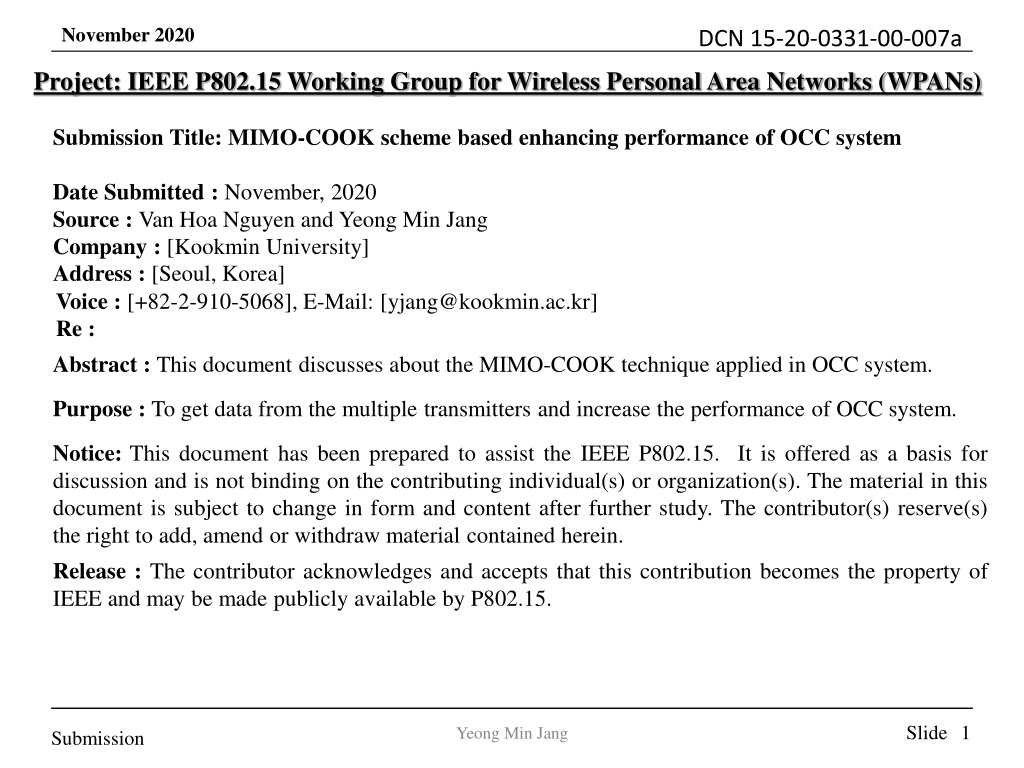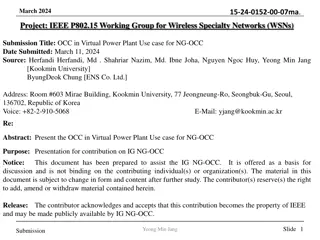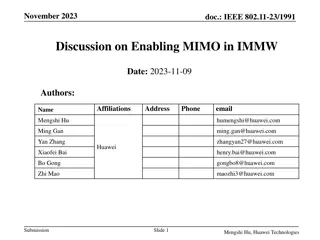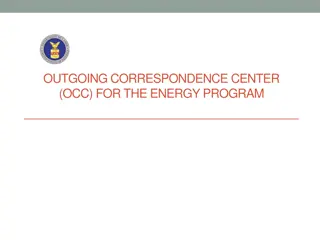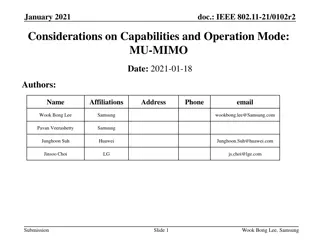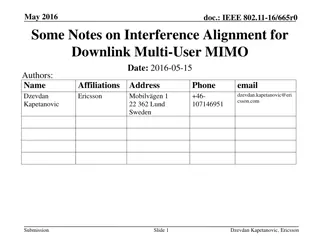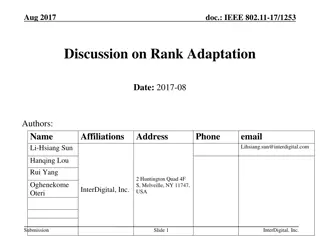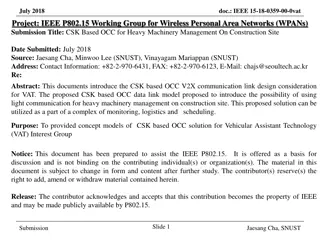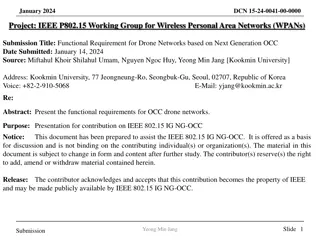Enhancing Performance of OCC System Using MIMO-COOK Scheme
This document explores the MIMO-COOK technique applied in the Optical Camera Communication (OCC) system to increase performance. The MIMO-COOK scheme captures data from multiple transmitters, improving data rate, distance communication, and system efficiency. With advantages like frame rate variation support and improved data rate through the use of multiple LEDs, this submission aims to enhance the existing OCC infrastructure.
Uploaded on Feb 25, 2025 | 0 Views
Download Presentation

Please find below an Image/Link to download the presentation.
The content on the website is provided AS IS for your information and personal use only. It may not be sold, licensed, or shared on other websites without obtaining consent from the author.If you encounter any issues during the download, it is possible that the publisher has removed the file from their server.
You are allowed to download the files provided on this website for personal or commercial use, subject to the condition that they are used lawfully. All files are the property of their respective owners.
The content on the website is provided AS IS for your information and personal use only. It may not be sold, licensed, or shared on other websites without obtaining consent from the author.
E N D
Presentation Transcript
November 2020 DCN 15-20-0331-00-007a Project: IEEE P802.15 Working Group for Wireless Personal Area Networks (WPANs) Submission Title: MIMO-COOK scheme based enhancing performance of OCC system Date Submitted : November, 2020 Source : Van Hoa Nguyen and Yeong Min Jang Company : [Kookmin University] Address: [Seoul, Korea] Voice: [+82-2-910-5068], E-Mail: [yjang@kookmin.ac.kr] Re : Abstract : This document discusses about the MIMO-COOK technique applied in OCC system. Purpose : To get data from the multiple transmitters and increase the performance of OCC system. Notice: This document has been prepared to assist the IEEE P802.15. It is offered as a basis for discussion and is not binding on the contributing individual(s) or organization(s). The material in this document is subject to change in form and content after further study. The contributor(s) reserve(s) the right to add, amend or withdraw material contained herein. Release : The contributor acknowledges and accepts that this contribution becomes the property of IEEE and may be made publicly available by P802.15. Slide 1 Yeong Min Jang Submission
November 2020 DCN 15-20-0331-00-007a Introduction On off keying (OOK) scheme is known as the simplest form of amplitude- shift keying modulation by using two statuses: ON/OFF to transmit data C-OOK stands for Camera- On Off Keying, a communication mode within the IEEE 802.15.7-2018 Optical Wireless Communication standard. Particularly, C-OOK is within the PHY V layer of IEEE 802.15.7-2018 standard. MIMO C-OOK scheme, which updated the conventional C-OOK scheme, used MIMO, region of interest, and match filter techniques Slide 2 Yeong Min Jang Submission
November 2020 DCN 15-20-0331-00-007a Introduction The OCC system can easily deploy the MIMO technique. It can cope with the big OCC problem of simultaneous connection with many light sources, and it can make it feasible for the camera as well. So the main goal of this contribution is to collect data from the multiple transmitters and also enhance performance of existing OCC system such as increase data rate, distance communication Slide 3 Yeong Min Jang Submission
November 2020 DCN 15-20-0331-00-007a LED#1 Insert Sequence Number Line Coding Insert OOK mapping FEC Start Frame LED#n Pre- Forward decoding Detect missing processing SF Down- sampling detection 1D image 2D image RoI Backward decoding Merger Packet Detection Matched filter decoder Figure 1. Reference architecture of the multiple-input multiple-output camera on off keying (MIMO COOK) scheme. Slide 4 Yeong Min Jang Submission
November 2020 Advantages of MIMO C-OOK scheme in OCC system DCN 15-20-0331-00-007a Frame rate variation support. The sequence number (SN) allows the receivers to decode data. Improve system performance as compared with the conventional C-OOK due to using a matched filter Improve data rate: Due to using multi-LEDs, the data rate will be increased as compared with the conventional C-OOK. Improve the communication distance: by using the matched filter to detect the start of frame and decode data, the communication distance is improved than the conventional C-OOK. Slide 5 Yeong Min Jang Submission
November 2020 DCN 15-20-0331-00-007a References [1] V.H. Nguyen, M.D. Thieu, H. Nguyen, and Y. M. Jang, Design and Implementation of the MIMO COOK Scheme Using an Image Sensor for Long-Range Communication, MDPI Sensors Journal, 2020. Slide 6 Yeong Min Jang Submission
